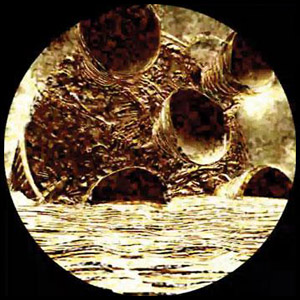 Part of the appeal of attending NASFiC last week was the chance to see parts of the country I'd never visited before, and Saint Louis certainly qualified. And while I expected to get my fair share of full-on skiffy immersion at the convention itself, I didn't have the slightest inkling that the most affecting speculative fiction I'd experience during my week-long road trip would not be at Archon, but rather at the stunning Saint Louis Art Museum. Science fiction has struggled, rightly or wrongly, for literary acceptance for more than a century, so imagine my cognitive dissonance when coming face-to-face with science fiction as fine art. The mind boggles.
Part of the appeal of attending NASFiC last week was the chance to see parts of the country I'd never visited before, and Saint Louis certainly qualified. And while I expected to get my fair share of full-on skiffy immersion at the convention itself, I didn't have the slightest inkling that the most affecting speculative fiction I'd experience during my week-long road trip would not be at Archon, but rather at the stunning Saint Louis Art Museum. Science fiction has struggled, rightly or wrongly, for literary acceptance for more than a century, so imagine my cognitive dissonance when coming face-to-face with science fiction as fine art. The mind boggles.Matthew Ritchie is a British-born artist with a fixation on information and communication. One suspects he's just the sort of fellow Bruce Sterling would get along with famously. At first glance, Ritchie's not the kind of person who I'd normally think of nominating for some sort genre award, but one glance was all that it took to get me hooked on an installation piece of his titled "The Iron City."
The presentation is deceptively simple: A single ceiling-mounted projector casting a circular scene onto the wall of an unassuming alcove on the second floor of the Saint Louis Art Museum. The circular image is evocative of a ship's porthole, or perhaps the view from a submarine's periscope. Through this plays a continuous, 1.5 hour loop of a flooded, post-apocalyptic world. A richly-detailed vision which looks all the world like animated woodcut, or perhaps metal etchings. Profoundly striking, mesmerizing even, as the woodcut waves ebb and flow, breaking against ruined bridges as debris of lost civilization litter the seascape. Through surround-sound speakers mounted at various points in the room, recordings of the Earth's magnetic field play for the viewer, haunting and disconcerting. Motion sensors trigger automatic playback of pre-recorded radio transmissions, fragments of communication that are as fleeting as they are intriguing.
As I sat watching, entranced, a growing feeling came over me that I'd experience this before, and it only took me a little while to put my finger on it--reading Nevil Shute's On the Beach. Even all these years later, that stoic work of impending nuclear extinction still has quite a hold over me, it seems. "The Iron City" never quite delves into the history of this particular holocaust, but some of the snatches of radio transmissions are evocative of Heston's famous rant at the finale of Planet of the Apes.
As it is, the film unfolds at a languid pace, a desolate travelogue of animation. In one of the most striking sequences lasting more than 10 minutes, an indistinct object comes into view, and grows significantly larger as the viewer's ship/submarine creeps closer to it over the waves. A flurry of possibilities tumble through the viewer's head: Is it a derelict supertanker? A dead whale? The woodcut style, amazingly detailed yet also maddeningly imprecise, blurs the identity of the object perfectly until our view comes around the side of the object and it suddenly becomes crystal clear that those things are Saturn 5 engine nozzles the waves are sloshing in and out of. Having visited the famous rocket garden at the Johnson Space Center many times over the years, the effect was immediate and tangible for me, a proactive case of déjà vu. "The Iron City" is captivating in equal measures for its simplicity and simultaneous complexity. This could be one of the greatest computer screen savers of all time, and I don't say that in any way to diminish the level of this work, but rather to bring it to the greatest possible number of admirers.
Ritchie is no stranger to computers, or the internet either. Long before "The Iron City" became a reality, Ritchie launched an ambitiously interactive SFnal-themed project with elements both online and off. The touring art gallery aspect seems to have passed beyond this mortal coil, but the web-based component, The Hard Way, is still live, awaiting new users to find their avatar and navigate Ritchie's imaginative creation. Again, the SFnal tones are undeniable, low culture elevated to high art. This man's work is just a small glimpse of what is possible for us humble folk who work with the literature of ideas, and that's an exciting prospect. Bravo, Mr. Ritchie, for a job well done.
No comments:
Post a Comment